基于氧化锌多组分烟气脱硫催化剂研究毕业论文
摘 要
在天然气工业、炼厂气工业和合成气工业等领域,氧化锌脱硫剂被广泛应用于这些工业气体中硫化氢的精脱除,由于硫化氢是有毒气体,不仅会对人体造成损害,还会造成设备或管线的腐蚀或断裂,所以为了设备的安全、生产的要求和环境保护,硫化氢气体都必须脱除。然而当前氧化锌高昂的成本使得其在工业中的应用受到了限制,因此,在保证脱硫性能的基础上如何降低氧化锌的用量是我们当前急需探索和解决的问题。本课题探索以廉价的工业原料或者废料为辅料,部分取代氧化锌,从而在保证脱硫性能的基础上,大幅降低催化剂的成本。
本论文采用以氧化锌为脱硫剂的基本组成成分,以工业废电石渣、粉煤灰、锰渣等辅料,与氧化锌共混,制备脱硫剂;然后根据机械强度测试结果,选择最佳烧结温度并测试其脱硫性能;之后通过考察上述最佳配方和最佳工艺参数制备的样品的脱硫性能,与商用氧化锌脱硫剂进行对比;最后对不同元素掺杂的样品进行XRD表征分析,探究了不同辅料对脱硫剂性能的影响。并得出了以下结论:
(1)在当前挤压条件下,由370℃焙烧后强度41N/cm,500℃焙烧后强度34N/cm可知。随着焙烧温度的增加,脱硫剂强度会降低,所以选用400℃焙烧的脱硫剂样品较为合适。
(2)在低比例氧化锌掺杂脱硫剂中,掺杂粉煤灰的脱硫剂的脱硫性能最优,在高比例氧化锌掺杂脱硫剂中,掺杂锰渣的脱硫剂的脱硫性能最优。
(3)不同辅料对脱硫剂脱硫性能影响有较大的差别。其中随着锰渣辅料掺杂量增加,脱硫剂脱硫性能变化显著,粉煤灰次之,电石渣辅料变化最缓。
(4)经过XRD表征分析,发现锰渣辅料脱硫剂中含有Mn2O3 、粉煤灰辅料脱硫剂中含有β-氧化铁水合物,电石渣辅料脱硫剂中含有碳酸钙。这些化合物具有一定的脱硫活性,也有利于提高氧化锌的脱硫活性。
关键词:氧化锌 脱硫 硫化氢 廉价辅料
ABSTRACT
In the fields of natural gas industry, refinery gas industry and syngas industry, zinc oxide desulfurizer is widely used in the fine removal of hydrogen sulfide in these industrial gases. Since hydrogen sulfide is toxic gas, it will not only cause danger to the human body, but also Corrosion or breakage of equipment or pipelines, so hydrogen sulfide gas must be removed for equipment safety, production requirements and environmental protection. However, now high cost of zinc oxide had limited its application in the industry. Therefore, how to reduce the amount of zinc oxide on the basis of ensuring the desulfurization performance is an urgent problem we need to explore and solve. This topic explores the use of cheap industrial raw materials or waste as an auxiliary material to partially replace zinc oxide, thereby greatly reducing the cost of the catalyst on the basis of ensuring the desulfurization performance.
In this thesis, zinc oxide is used as the basic component of desulfurizer. Industrial waste carbide slag, fly ash, manganese slag and other auxiliary materials are blended with zinc oxide to prepare desulfurizer. Then, according to the mechanical strength test results, the best sintering is selected. Temperature and test its desulfurization performance; after desulfurization performance of the sample prepared by investigating the above optimal formula and optimal process parameters, it is compared with commercial zinc oxide desulfurizer; finally, XRD analysis of different element doped samples is carried out. Different excipients on the performance of desulfurizers were explored. The following conclusions were drawn:
(1) Under the current extrusion conditions, the strength after firing at 370 ℃ is 41 N/cm, and the strength after firing at 500 ℃ is 34 N/cm. As the calcination temperature increases, the strength of the desulfurizer decreases, so a 400℃calcined desulfurizer sample is suitable.
(2) Among the low proportion of zinc oxide doped desulfurizer, the desulfurization agent doped with fly ash has the best desulfurization performance. Among the high proportion of zinc oxide doped desulfurizer, the desulfurization agent doped with manganese slag has the best desulfurization performance.
(3) Different excipients have great influence on the desulfurization performance of desulfurizer. Among them, the desulfurization performance of the desulfurizer changed significantly with the increase of the doping amount of the manganese slag auxiliary material, followed by the calcium carbide slag and the slowest change of the fly ash auxiliary material.
(4) After XRD characterization, it was found that the manganese slag auxiliary desulfurizer contained Mn2O3, the fly ash auxiliary desulfurizer contained β-iron oxide hydrate, and the calcium carbide slag auxiliary desulfurizer contained calcium carbonate. These compounds have a certain desulfurization activity and are also beneficial for increasing the desulfurization activity of zinc oxide.
Key words: Zinc oxide; Desulfurization; H2S; Cheap accessories
目 录
摘要 I
ABSTRACT II
第一章 绪论 1
1.1 引言 1
1.2 脱硫方式及其分类 1
1.2.1 湿法脱硫 2
1.2.2 干法脱硫 2
1.3 金属氧化物脱硫剂的种类 3
1.3.1氧化锌脱硫剂 3
1.3.2氧化铁脱硫剂 4
1.3.3氧化锰脱硫剂 4
1.3.4其它金属氧化物脱硫剂 4
1.4 氧化锌脱硫剂的概述 5
1.4.1氧化锌的种类 5
1.4.2氧化锌脱硫剂的一般制备方法 5
1.4.3氧化锌脱硫机理及影响因素 6
1.4.4目前氧化锌价格 7
1.5 本课题的问题提出及研究内容 7
第二章 实验方法 8
2.1 实验原料与试剂 8
2.2 脱硫剂的制备和检测设备 8
2.3 脱硫剂的制备 8
2.4脱硫剂的脱硫性能测试 9
2.6脱硫剂样品与商用脱硫剂脱硫性能对比 13
第三章 结果与讨论 16
3.1、表征方法 16
3.1.1 X射线衍射 (XRD) 分析 16
3.2 分析结果 16
3.2.1 粉煤灰辅料样品 XRD 分析 16
3.2.2 电石渣辅料样品 XRD 分析 17
3.2.3 锰渣辅料样品 XRD 分析 17
第四章 结论和展望 19
4.1 主要结论 19
4.2 展望 20
参考文献 21
致谢 23
第一章 绪论
1.1 引言
近年来,环境污染问题严峻,这与我国的工业现代化道路不断发展有一定的关系。其中重要的原因就包括SO2和H2S气体的排放,这些气体排放会形成酸雨严重危害建筑并且污染环境[1]。另外一方面,我国煤炭资源丰富,是煤炭大国[2]。这就使得脱硫成为了煤炭利用过程中必须要解决的问题。在IGCC工程中,由于烟气中硫化氢气体的存在不仅会污染环境,而且会腐蚀燃气轮机的叶片。因此为了保证IGCC工程的安全,煤气净化脱除硫化氢就至关重要[3]。
另外,在工业合成气方面,由于硫化氢的存在会毒害催化剂,因此高效催化剂就需要更加纯净的原料气。硫化氢的精脱除已经成为各行业工业生产中的重要课题。各行业对硫化氢的含量也制订了相应标准,例如合成聚丙烯工业要求丙烯原料中的总硫质量分数不大于1.0-2.0μg/g;燃气轮机工业中所用的煤气中H2S的体积分数要低于100μL/L [4-5]。
氧化锌脱硫剂因为具有较高的硫容和脱硫精度,在工业上被广泛应用。各行业根据各自的工艺要求用氧化锌进行各种工业气体中硫化氢的精脱除。近年来国家对环境保护的要求也日趋严格,这又进一步拓展了ZnO脱硫剂的应用领域。使得市场上对氧化锌的需求也在快速增长。根据Research and Markets公司的调查。2018到2023年期间,国内外的氧化锌市场增长率将约4.32%,大约从40.65亿美元增长到52.39亿美元,中国的氧化锌市场潜力巨大[6]。我国氧化锌产量虽然发展很快,但在产品的品质上与国外厂家还有较大差距[7]。
1.2 脱硫方式及其分类
硫化氢存在于很多气体中,如天然气、煤气、石油气、生物气等。不同的气体有不同的脱硫温度和方式,其中分类方式有很多,不过大概可以分为按温度分类、按精度分类和按方式分类。按温度分:低温脱硫(200℃以下)、中温脱硫(200℃到400℃之间)和高温脱硫(大于400℃);按脱硫精度分可:粗脱硫、二次脱硫、精细脱硫和超精细脱硫[8];不过大家最常用的分类方法还是湿法脱硫和干法脱硫。
1.2.1 湿法脱硫
湿法脱硫是用液态脱硫剂来进行脱除含硫气体的方式。硫化氢是一种酸性气体,可用碱性物质吸收,如碳酸钠、氨水[9]。湿法脱硫可以分为以下几种。
相关图片展示:
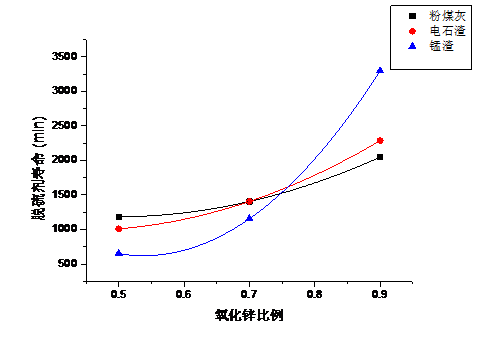
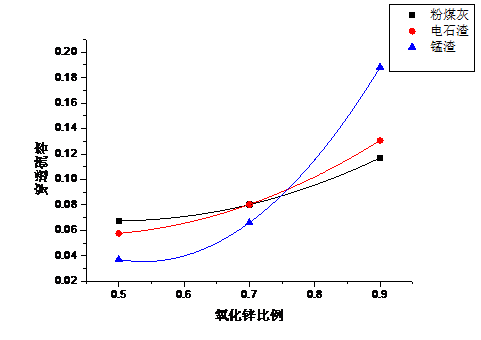
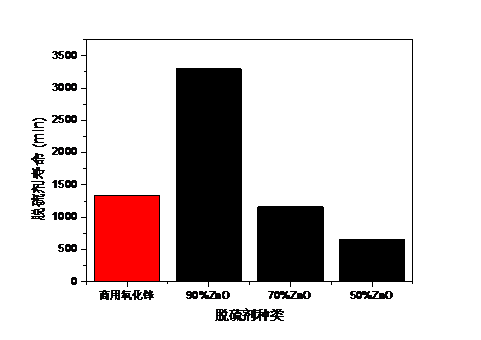
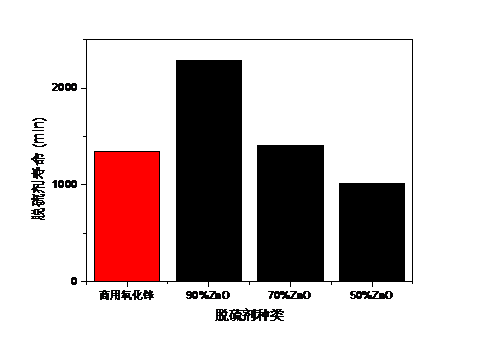
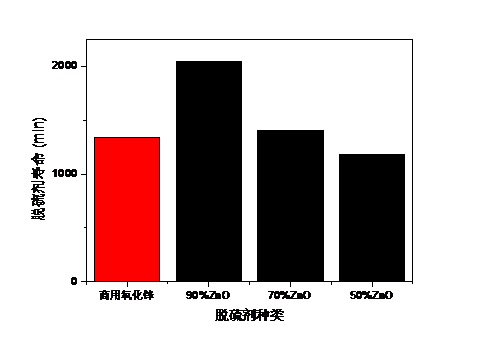
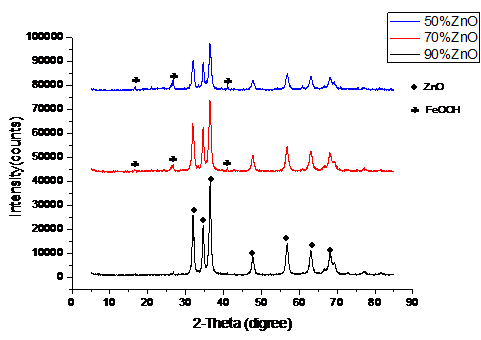
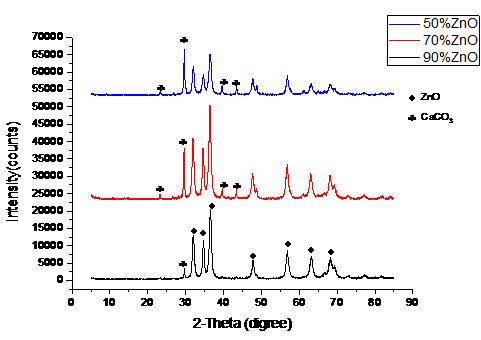
课题毕业论文、开题报告、任务书、外文翻译、程序设计、图纸设计等资料可联系客服协助查找。



